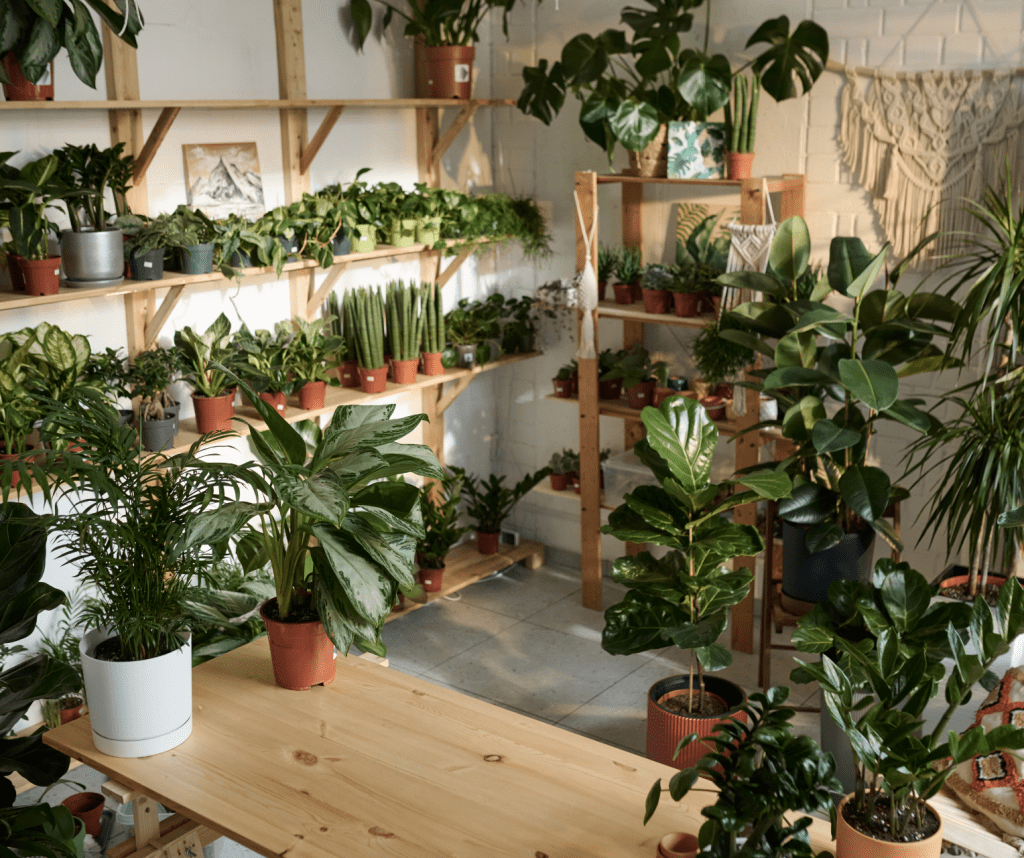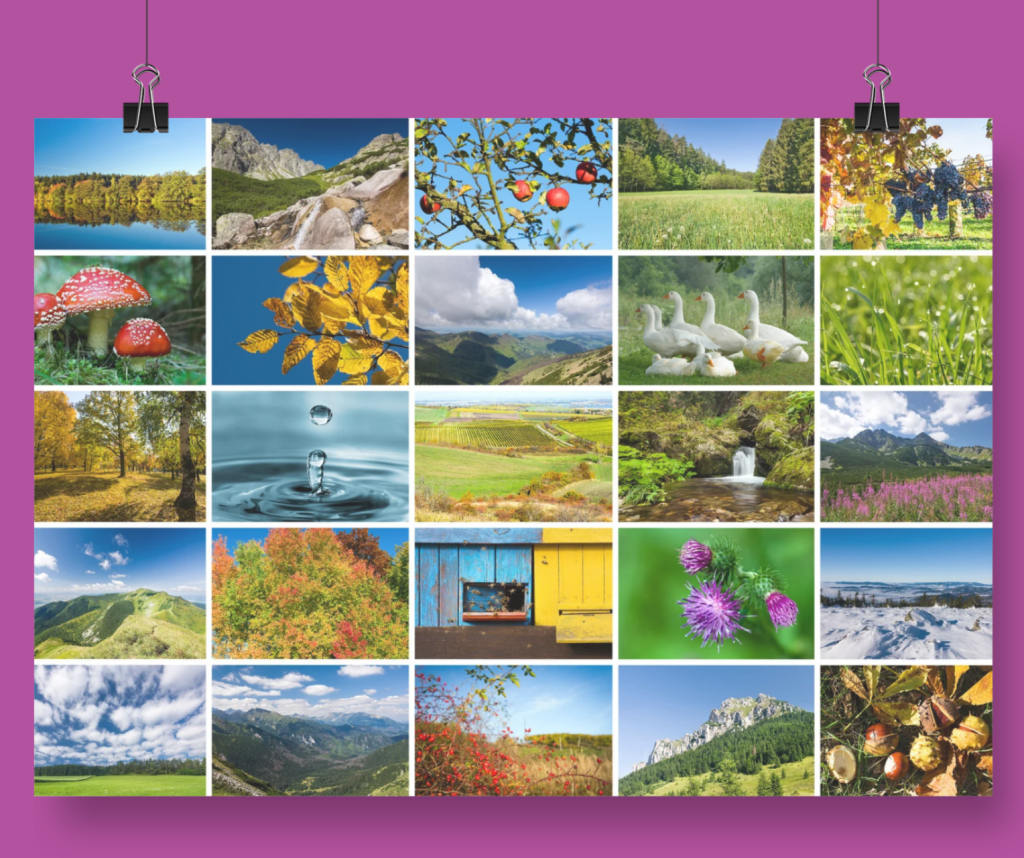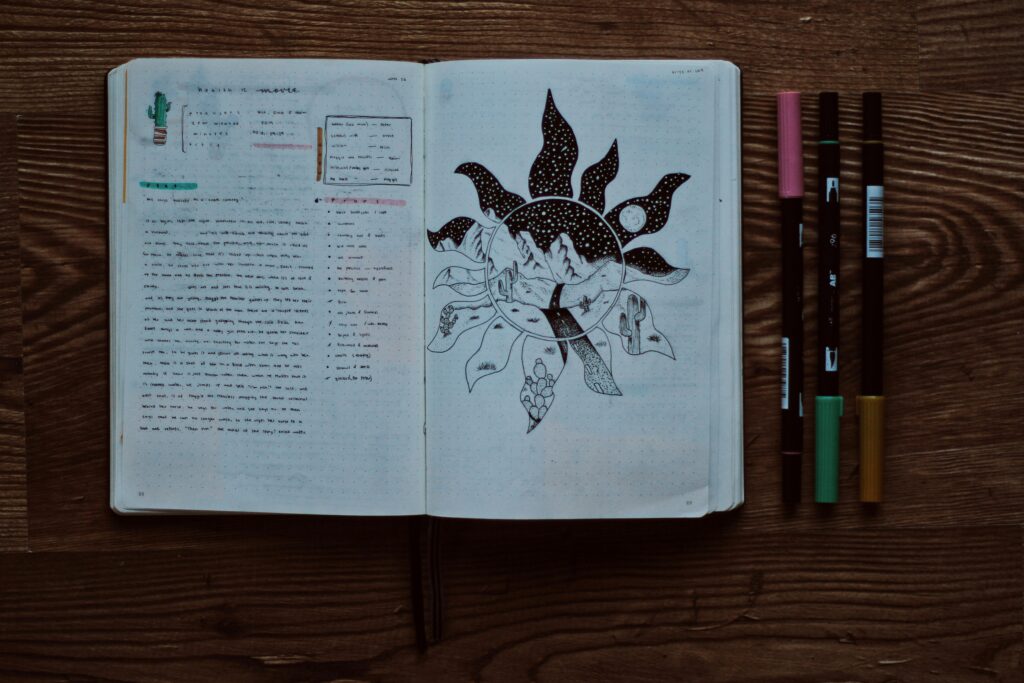The image of practising ‘Deep Nature Connection’ might conjure visions of sprawling ancient forests, vast mountain ranges or secluded, untouched wilderness. While these majestic landscapes would certainly offer epic experiences, the truth is, the magic of nature isn’t exclusive to grand vistas. Everyday nature is woven into the fabric of our daily lives, waiting to be discovered, regardless of our physical abilities or urban surroundings. For many, mobility issues or a city dwelling might seem like insurmountable barriers to the restorative power of nature.
But let me tell you, that simply isn’t true.

Nature’s embrace is inclusive, adaptable and remarkably accessible. You don’t need a forest, a sprawling garden, or even to step outside your front door to forge a meaningful and accessible nature connection with the natural world. All you need is an open heart, a curious mind, and an awareness of the vibrant life that surrounds us, even in the most unexpected places.
Bringing Nature Indoors: Your Home as a Sanctuary

Even if getting outside isn’t an option, your home can become a powerful conduit for accessible nature connection.
- The Window Wonderland: This is perhaps the simplest, yet most impactful, gateway. Dedicate time each day to simply observing what’s outside your window. Notice the movement of clouds, the dance of leaves on a nearby tree, the flight of birds or the subtle changes in light throughout the day. Is there a bird that often visits? What does the sky look like right now? How does the light change from morning to evening? This focused observation can be incredibly grounding and it’s an example of one activity in the short online Nature Connection course – From Jaded to Joyful in 7 Days: https://adoreyouroutdoors.co.uk/7dayjourney/
- Sounds of the Wild: Many apps and online platforms offer high-quality recordings of natural sounds – forest ambience, ocean waves, birdsong, gentle rain (perfect for the pluviophile!). Play these softly in the background as you read, work or relax.
- Touch and Texture: Bring natural elements inside. A vase of fresh flowers, a bowl of smooth river stones, a piece of driftwood, a pinecone. Touch them mindfully, noticing their textures, temperatures and forms.
- Nature’s Aromas: Essential oil diffusers with natural scents like pine, cedarwood, or earthy blends can evoke the magical feeling of being in a forest. Alternatively, simply bringing in fresh branches, herbs from a window box or even a handful of damp moss (of course!) in a small bowl can offer powerful olfactory connection.
- Visual Delights: Adorn your walls with nature photography, art inspired by landscapes, or even create a digital slideshow of beautiful nature scenes to display on a screen. Use nature-inspired fabrics and soft furnishings around the home.
- Indoor Gardening (No Green Fingers Required!): As my recent obsession proves, houseplants can be a source of wonder. For beginners; herbs on a windowsill provide both visual appeal and wonderful scent, while microgreens are another easy option. And for fun and if you’re keen to push the boat out, here are two Instagram accounts you can follow for inspiration:
The Bearded Plantaholic: https://www.instagram.com/thebeardedplantaholic/
The Plant Rescuer: https://www.instagram.com/theplantrescuer/
Accessible Nature Connection: Finding Green in the Concrete Jungle

For those who can venture out, but live in urban environments, green spaces are often closer than you think.
- Pocket Parks and Community Gardens: Cities are increasingly prioritising small green spaces. Seek out small local parks, urban community gardens, and even churchyards! These often hide a surprising diversity of plant and insect life with some church gardens in particular being rewilded. Taking our digital Forest Bathing and Nature Connection Cards with you will give you some prompts to follow to deepen your experience. Like having a Forest Bathing Guide in your pocket!: https://adoreyouroutdoors.co.uk/forestbathingcards/
- Tree Spotting: Even on busy streets, trees line pavements. Take a moment to truly notice them. Notice the intricate patterns of their bark, the varying shapes of their leaves, or the tiny insects scurrying on their trunks. Each tree has a unique character and story. One year I visited the same tree each month to share its journey through the year – could you do this?
- Verges and Wildflowers: Don’t underestimate the power of verges and neglected corners. Often, valuable native wildflowers, grasses and resilient plants thrive here. Observe the subtle beauty of these small ecosystems – how insects interact with the flowers, find shelter and lay eggs here, or how the wind makes the blades of grass dance in the breeze.
- Window Boxes and Balconies: If you have a balcony or even just a window ledge, transform it into a mini-haven. Plant herbs, wildflowers, or miniature shrubs. Attract birds with a feeder or insects with pollinator-friendly plants. This personal patch of green becomes a constant source and personal sanctuary of nature connection.
- Mindful Public Transport: If you travel by bus or train, use the journey to observe the nature you pass. Notice trees, parks, gardens, and even the sky. It’s a chance to practice mobile mindfulness!
Accessibility in Green Spaces: Accessible Nature Connection
If you can access larger green spaces, even with mobility aids, there are many ways to deepen your connection.
- Accessible Trails: Many parks and nature reserves now offer accessible paths for wheelchairs or limited mobility. Research these in advance. Even a short stretch of a level path can offer immense benefits.
- Seated Connection: Find a bench, a picnic table, or even bring a portable chair. Sit quietly and engage your senses from a stationary position. Observe, listen, smell, and feel the touch of the air.
- Focused Observation: Instead of trying to cover a lot of ground, pick one spot and stay there for an extended period. Focus intensely on one tree, a patch of moss, or a small area of the ground. This intense focus can reveal incredible detail and foster a deep sense of presence.
- Soundscapes: Close your eyes and simply listen to the sounds of the environment. Identify individual sounds – birds, rustling leaves, water, insects. How do they combine to create the soundscape?
- Touch and Feel: If you can safely reach, touch different natural elements – smooth stones, rough bark, soft leaves. Notice the temperature and texture.
- Guided Meditations & Invitations: Use guides or apps designed for Nature Connection or Forest Bathing. These can provide prompts and invitations that help you engage your senses and connect deeply, regardless of how much you move. Get your free guide here: https://go.adoreyouroutdoors.co.uk/solofbpls
Beyond the Physical: The Power of Imagination and Memory

Our minds are powerful tools for nature connection, even when direct physical access is limited.
- Visualisation: Close your eyes and vividly imagine a favourite natural place. Recall the sights, sounds, smells, and feelings of being there. Let your mind transport you.
- Nature Journaling: Keep a journal of your nature observations, even if they’re from a window or a single pot plant. Write about what you see, hear, feel, and the thoughts and embodied responses it evokes. This deepens your connection through reflection, and writing a ‘Daily Dose of Nature’ diary is one of the most loved coursework tasks in the accredited Forest Bathing Guide Training we run. Find out more here: https://adoreyouroutdoors.co.uk/forestbathingguidetraining
- Reading and Learning: Immerse yourself in books, documentaries, and poetry about nature. Learn about local flora and fauna, ecosystems, and the science of the natural world. This intellectual connection can be deeply satisfying.
- Creative Expression: Draw, paint, write poetry, or compose music inspired by nature, whether it’s the view from your window or a memory of a forest walk. Creative expression strengthens your bond.
The True Magic of Accessible Nature Connection

The core of Nature Connection isn’t about physical exertion or remote wilderness. It’s about presence, awareness and reciprocity – giving back to the natural world to honour how much it does for us. It’s about slowing down enough to notice the intricate web of life that we are inherently a part of. Whether it’s the tenacious weed pushing through pavement cracks, the robin singing on your fence or the feel of the moss wall in your home, every moment offers an opportunity to connect.
So, let go of the idea that you need a grand forest or boundless mobility to experience the magic of deep Nature Connection. Open your senses, cultivate curiosity and allow the natural world, in all its forms, to embrace you, right where you are. The benefits – reduced stress, improved well-being, and a stronger desire to protect Mother Earth – are waiting for you, just beyond your nearest leaf or pane of glass.
Want to Learn More About How You Can Take This Further?

We run a twice-accredited Nature Connection and Forest Bathing Guide Training programme with a focus on accessible Nature Connection.
This includes teaching how to adapt the practices to working online, in gardens and indoors.
If you want to find out more, visit here: https://adoreyouroutdoors.co.uk/forestbathingguidetraining/


